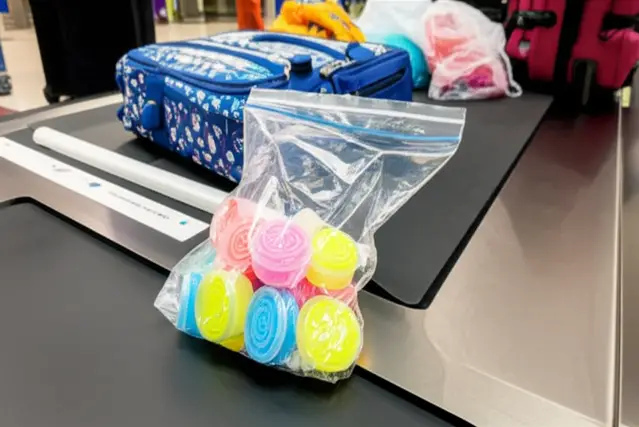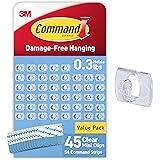Planning a trip and wondering if your kids can bring their favorite slime? Or maybe you’re a slime enthusiast yourself? Navigating airport security can be tricky, and understanding what’s allowed and what’s not is crucial for a smooth travel experience.
This comprehensive guide, updated for 2025, will answer all your questions about bringing slime on a plane. We’ll delve into TSA regulations, packing tips, different types of slime, and even some fun facts to keep you entertained while you wait for your flight. Get ready to become a slime travel expert!
Table of Contents
Is Slime Allowed on Airplanes? The Short Answer
The short answer is: generally, yes, you can bring slime on a plane. However, there are some important caveats and guidelines to keep in mind. The Transportation Security Administration (TSA) has rules about liquids and gels, and slime often falls into that category. Understanding these rules is the key to avoiding any issues at security checkpoints.
Understanding TSA Regulations: The Liquid and Gel Rule
The TSA’s “3-1-1 liquids rule” is the most important regulation to consider when packing slime. This rule states that you can bring liquids and gels in your carry-on luggage, but they must meet the following criteria:
- 3.4-ounce (100 milliliters) or smaller container: Each container of liquid or gel must be 3.4 ounces (100 milliliters) or smaller.
- 1 quart-sized, clear, plastic, zip-top bag: All containers must fit into a single, quart-sized, clear, plastic, zip-top bag.
- 1 bag per passenger: Each passenger is limited to one quart-sized bag of liquids and gels.
Slime, depending on its consistency, is often considered a gel by the TSA. Therefore, these rules apply. This means that if you want to bring slime in your carry-on, you’ll need to make sure it’s in a container that’s 3.4 ounces (100 milliliters) or smaller, and it fits within your quart-sized bag. Larger quantities should be packed in your checked baggage.
Checked Baggage vs. Carry-On: Where Should You Pack Your Slime?
The 3-1-1 rule only applies to carry-on baggage. If you’re packing larger quantities of slime, your best bet is to pack it in your checked baggage. While there are no specific size restrictions for liquids and gels in checked baggage (beyond the overall weight limits of your suitcase), it’s still a good idea to package them carefully to prevent leaks and spills. Wrap your slime containers in plastic bags or consider using airtight containers to minimize the risk of any mess.
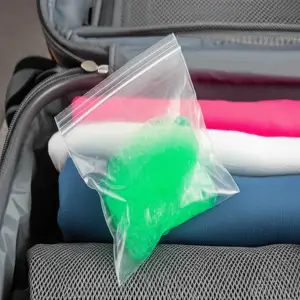
TSA slime guidelines
TSA Discretion: The Human Factor
It’s important to remember that TSA officers have the final say on what’s allowed through security. Even if your slime meets the 3-1-1 rule, a TSA officer may still decide that it’s not permitted, especially if they’re unsure about its composition or potential safety. If this happens, it’s best to remain calm, respectful, and cooperate with the officer’s instructions. You may be given the option to dispose of the slime or place it in your checked baggage (if you haven’t already checked it).
Types of Slime and Their Airline Compatibility
Not all slime is created equal. The type of slime you’re traveling with can influence how TSA views it. Here’s a breakdown of common slime types and their potential compatibility with airline regulations:
- Classic Slime (Glue-Based): This is the most common type of slime, made with glue, activator (like borax or saline solution), and often other ingredients like food coloring and glitter. Because of its gel-like consistency, it’s generally subject to the 3-1-1 rule for carry-on luggage.
- Butter Slime: Butter slime gets its name from its soft, spreadable texture, often achieved by adding model clay or similar ingredients. While it might seem less “liquid” than classic slime, it can still be considered a gel and subject to the 3-1-1 rule.
- Cloud Slime: Cloud slime is known for its fluffy, snow-like texture, achieved by adding instant snow powder. This type of slime might be less likely to be flagged as a gel, but it’s still best to err on the side of caution and pack it according to the 3-1-1 rule if you’re bringing it in your carry-on.
- Clear Slime: Clear slime is transparent and often made with clear glue. Its appearance can sometimes be misleading, making it look more liquid than it actually is. Therefore, it’s best to treat it as a gel and follow the 3-1-1 rule.
- Magnetic Slime: Magnetic slime contains iron filings, which give it magnetic properties. While the slime itself might be subject to the 3-1-1 rule, the presence of metal could raise additional concerns with TSA. It’s advisable to check with the airline and TSA in advance if you plan to travel with magnetic slime. Consider packing it in your checked baggage to avoid any potential issues.
- Edible Slime: Edible slime, made with ingredients like gummy bears or marshmallows, might seem less problematic. However, it still falls under the purview of TSA and could be subject to the 3-1-1 rule due to its gel-like consistency. While it might seem odd to restrict edible slime, the rule applies to all gels, regardless of their edibility.
Table: Slime Type and Carry-On Suitability
| Slime Type | Carry-On Suitability (Based on TSA 3-1-1 Rule) | Notes |
|---|---|---|
| Classic Slime | Yes, if in containers of 3.4 oz (100ml) or less and in a quart-sized bag | Most common type; treat as a gel. |
| Butter Slime | Yes, if in containers of 3.4 oz (100ml) or less and in a quart-sized bag | Treat as a gel, despite the clay content. |
| Cloud Slime | Yes, if in containers of 3.4 oz (100ml) or less and in a quart-sized bag | May be less likely to be flagged, but still recommended. |
| Clear Slime | Yes, if in containers of 3.4 oz (100ml) or less and in a quart-sized bag | Treat as a gel due to its consistency. |
| Magnetic Slime | Potentially Problematic | Due to the metal content, check with airline and TSA in advance; consider checked baggage. |
| Edible Slime | Yes, if in containers of 3.4 oz (100ml) or less and in a quart-sized bag | Treat as a gel, even though it’s edible. |
Packing Tips for Traveling with Slime
Proper packing can make all the difference when traveling with slime. Here are some tips to ensure a smooth and mess-free journey:
- Use Small, Leak-Proof Containers: Opt for small, leak-proof containers that meet the 3.4-ounce (100 milliliters) limit. Travel-sized containers designed for liquids and gels are ideal.
- Double-Bag Your Slime: Place each container of slime in a separate zip-top bag for added protection against leaks. This will help contain any spills and prevent them from spreading to your other belongings.
- Pack in a Clear, Quart-Sized Bag: Place all your small slime containers in a clear, quart-sized, zip-top bag, as required by the TSA’s 3-1-1 rule.
- Consider Solid Alternatives: If you’re concerned about the liquid restrictions, consider bringing solid slime alternatives, like putty or modeling clay, which are less likely to be subject to the 3-1-1 rule.
- Label Your Slime: Labeling your slime containers can help TSA officers quickly identify the contents and understand that it’s a safe, non-hazardous item. A simple label like “Slime – Non-Toxic” can be helpful.
- Keep Slime Accessible: When going through security, keep your quart-sized bag of liquids and gels (including your slime) easily accessible. This will speed up the screening process and make it less likely that your bag will be searched.
- Avoid Overfilling Containers: Don’t overfill your slime containers. Changes in air pressure during the flight can cause the slime to expand, which could lead to leaks. Leave some room at the top of the container to allow for expansion.
- Pack Extra Zip-Top Bags: It’s always a good idea to pack extra zip-top bags in case of spills or leaks. You can also use them to separate your slime from other items in your luggage.
Real-World Examples: Slime Travel Success Stories (and Failures)
Let’s look at some real-world examples of people traveling with slime:
- Success Story: Sarah, a mother of two, successfully brought slime on a flight to Disney World. She packed small containers of classic slime in a clear, quart-sized bag in her carry-on. She reported no issues with TSA and her kids were happily playing with their slime on the plane.
- Failure Story: Mark tried to bring a large container of butter slime in his carry-on, exceeding the 3.4-ounce limit. TSA confiscated the slime, and Mark had to purchase new slime at his destination.
- Mixed Result: Lisa packed cloud slime in her carry-on, following the 3-1-1 rule. However, a TSA officer was unsure about the texture of the slime and requested a secondary screening. After a brief inspection, the slime was allowed through.
These examples highlight the importance of following the 3-1-1 rule, being prepared for potential scrutiny, and packing smart. Remember that experiences can vary, and TSA officers have the final say.
Alternative Entertainment Options for Kids (If Slime Isn’t an Option)
While bringing slime on a plane can be a fun way to keep kids entertained, it’s always good to have backup options in case your slime doesn’t make it through security or if you simply prefer not to deal with the potential mess. Here are some alternative entertainment ideas for kids on a plane:
- Coloring Books and Crayons: A classic choice that never gets old. Bring a variety of coloring books and crayons to keep kids occupied for hours.
- Activity Books: Look for activity books with puzzles, mazes, word searches, and other engaging activities.
- Travel Games: There are many travel-sized games available that are perfect for plane rides, such as magnetic board games or card games.
- Books: Bring a selection of books that are appropriate for your child’s age and reading level.
- Electronic Devices: Tablets, smartphones, and portable gaming devices can be a lifesaver on long flights. Download movies, TV shows, and games before you leave home. Remember to bring headphones!
- Sticker Books: Sticker books are a fun and relatively mess-free activity for younger children.
- Pipe Cleaners and Beads: These can be used to create all sorts of crafts and are lightweight and easy to pack.
- Audiobooks: Audiobooks are a great way to entertain kids without requiring them to look at a screen.
Remember to choose activities that are quiet and won’t disturb other passengers. Also, be mindful of screen time and encourage your kids to take breaks and engage in other activities as well.
Staying Updated: TSA Regulations and Airline Policies
TSA regulations and airline policies can change, so it’s important to stay updated before your trip. Here are some resources to check:
- TSA Website (TSA.gov): The official TSA website is the best source for the most up-to-date information on security regulations. You can search for specific items (like “slime”) to see if there are any restrictions.
- Airline Websites: Check your airline’s website for their specific policies on liquids and gels. Some airlines may have stricter rules than the TSA.
- TSA Social Media: The TSA has a presence on social media platforms like Twitter (@AskTSA) and Facebook. You can ask questions and get real-time updates on security regulations.
- Contacting TSA or Your Airline Directly: If you have any specific questions or concerns, you can contact the TSA or your airline directly. This is especially recommended if you’re traveling with unusual items, like magnetic slime, or if you have any doubts about whether something is allowed.
By staying informed, you can avoid any surprises at the airport and ensure a smooth and stress-free travel experience.
Slime Trends in 2025 and How They Might Impact Travel
Slime is still incredibly popular in 2025, with new trends and variations constantly emerging. Here’s a look at some of the current slime trends and how they might affect your travel plans:
- DIY Slime Kits: DIY slime kits are more popular than ever, allowing kids to create their own custom slime. If you’re bringing a DIY slime kit on a plane, make sure that all the individual components (glue, activator, glitter, etc.) meet the 3-1-1 rule if you’re packing them in your carry-on.
- Textured Slimes: Textured slimes, like cloud slime, butter slime, and foam slime, are still trending. These slimes often contain additives that could raise concerns with TSA, so it’s best to pack them according to the 3-1-1 rule and be prepared for potential scrutiny.
- Scented Slimes: Scented slimes, infused with essential oils or fragrance oils, are also popular. While the scent itself shouldn’t be an issue with TSA, the slime still needs to meet the 3-1-1 rule if it’s in your carry-on.
- Slime Charms and Add-ins: Many slimes now include charms, beads, and other small add-ins. These items are generally not a problem for travel, but make sure they are securely contained within the slime to prevent them from spilling or getting lost.
- Subscription Boxes: Slime subscription boxes, delivering curated slime creations to your doorstep, are a growing trend. If you’re planning on traveling shortly after receiving a slime subscription box, be sure to repackage the slime into smaller, TSA-compliant containers if you want to bring it in your carry-on.
As slime trends continue to evolve, it’s important to stay informed about potential travel restrictions and pack accordingly. When in doubt, it’s always best to err on the side of caution and pack larger quantities of slime in your checked baggage.
Addressing Common Concerns: Is Slime Toxic or Dangerous?
A common concern among parents is whether slime is toxic or dangerous. Most commercially available slimes are made with non-toxic ingredients, such as glue, borax (or saline solution), and food coloring. However, it’s important to be aware of potential risks and take precautions:
- Borax Safety: Borax, a common slime activator, can be irritating to the skin and eyes if used in high concentrations. When making homemade slime, be sure to follow the instructions carefully and use the recommended amount of borax. Supervise children closely when they are playing with slime made with borax.
- Allergies: Some people may be allergic to ingredients in slime, such as glue, fragrances, or dyes. If you have any known allergies, check the ingredient list carefully before playing with slime.
- Small Parts: Slime often contains small parts, such as beads, glitter, and charms, which can be a choking hazard for young children. Keep slime out of reach of children under the age of three.
- Ingestion: Slime is not meant to be eaten. Although most slimes are made with non-toxic ingredients, ingesting large quantities of slime can cause stomach upset.
- Handwashing: Wash your hands thoroughly after playing with slime to remove any residue.
When traveling with slime, it’s a good idea to bring a small bottle of hand sanitizer to clean your hands after playing with it. This is especially important if you’re traveling with young children who may be more likely to put their hands in their mouths.
TSA PreCheck and Global Entry: Do They Make a Difference?
TSA PreCheck and Global Entry are programs that allow expedited security screening for pre-approved travelers. While these programs can significantly speed up the security process, they don’t necessarily exempt you from the 3-1-1 rule for liquids and gels. You’ll still need to follow the same guidelines for packing your slime if you’re bringing it in your carry-on.
However, TSA PreCheck can make the screening process slightly easier. With TSA PreCheck, you don’t have to remove your shoes, belts, or light jackets, and you can leave your laptop and 3-1-1 liquids bag in your carry-on in some cases. This can save you time and make the overall experience less stressful. Link to a TSA PreCheck resource here. However, TSA officers still reserve the right to inspect any item, including your slime, if they have concerns.
Traveling Internationally with Slime: What You Need to Know
If you’re traveling internationally with slime, you’ll need to be aware of the regulations of both the TSA (for your departure from the United States) and the security agencies of your destination country. While the TSA’s 3-1-1 rule is widely recognized, other countries may have different or stricter rules regarding liquids and gels.
Here are some tips for traveling internationally with slime:
- Check the Regulations of Your Destination Country: Research the security regulations of the airports and airlines in your destination country. You can usually find this information on the airport’s or airline’s website.
- Be Prepared for Additional Scrutiny: Security officers in other countries may be less familiar with slime and more likely to subject it to additional scrutiny. Be patient, polite, and cooperative.
- Consider Purchasing Slime at Your Destination: To avoid any potential issues, consider purchasing slime at your destination rather than bringing it from home. This is especially a good option if you’re traveling to a country where you’re unsure about the security regulations.
- Declare Your Slime: If you’re unsure about whether your slime is allowed, declare it to customs officials upon arrival in your destination country. This can help you avoid potential fines or penalties.
Making Slime On-the-Go: A Travel-Friendly Recipe (If Allowed)
If you’re feeling adventurous and want to make slime while you’re traveling, you can try a simple, travel-friendly recipe that doesn’t require borax. However, be aware that bringing glue and other ingredients in your carry-on will still be subject to the 3-1-1 rule. This recipe assumes that you will have access to buy the ingredients once you arrive at your destination, and focuses on easy steps and minimal equipment.
Travel-Friendly Slime Recipe (No Borax)
Ingredients:
- Clear school glue (meeting 3.4-ounce limit if in carry-on, otherwise purchase at destination)
- Liquid laundry detergent (meeting 3.4-ounce limit if in carry-on, otherwise purchase at destination)
- Food coloring (optional, can be purchased at destination)
- Glitter (optional, can be purchased at destination)
Instructions:
- Pour the clear glue into a small container.
- Add a few drops of food coloring (if desired) and stir well.
- Slowly add liquid laundry detergent, a little at a time, while stirring continuously.
- Continue adding laundry detergent until the slime begins to form and pull away from the sides of the container.
- Knead the slime with your hands until it becomes smooth and stretchy.
- Add glitter (if desired) and mix well.
Important Considerations:
- Make sure to use a liquid laundry detergent that contains borax or a similar thickening agent. Not all detergents will work.
- Be careful not to add too much laundry detergent, as this can make the slime too stiff.
- Supervise children closely when they are making slime.
- Wash your hands thoroughly after making slime.
Remember to check the regulations of your destination country regarding the transportation of these ingredients before attempting to make slime while traveling.
Slime Storage and Disposal While Traveling
Proper storage and disposal of slime are important for maintaining hygiene and preventing messes while traveling.
- Storage: Store your slime in an airtight container to prevent it from drying out or becoming contaminated. A small, resealable plastic container is ideal.
- Cleaning: If slime gets on clothing or other surfaces, try to remove it as soon as possible. You can usually remove slime with warm water and soap. For more stubborn stains, try using vinegar or rubbing alcohol.
- Disposal: When you’re finished with your slime, dispose of it properly. Do not flush slime down the toilet, as this can clog the pipes. Instead, throw it away in a trash can.
Slime as Stress Relief: Can It Help with Travel Anxiety?
Many people find playing with slime to be a relaxing and stress-relieving activity. The tactile sensation of stretching, squishing, and manipulating slime can be calming and help to reduce anxiety. If you experience travel anxiety, bringing a small container of slime with you on the plane could potentially help you to relax and feel more comfortable. Link to a resource on travel anxiety.
However, it’s important to be mindful of other passengers and avoid making excessive noise or mess while playing with slime. Also, be sure to follow the 3-1-1 rule if you’re bringing slime in your carry-on.
DIY Slime Recipes: A Quick Guide for Home Preparation Before Travel
If you prefer to make your own slime before traveling, here are a few quick and easy DIY slime recipes to get you started:
- Basic Borax Slime: Combine glue, water, and borax solution. This is a classic recipe that produces a stretchy and durable slime.
- Saline Solution Slime: Combine glue, saline solution, and baking soda. This recipe is a good alternative to borax slime and produces a similar texture.
- Liquid Starch Slime: Combine glue and liquid starch. This recipe is very simple and requires only two ingredients.
Remember to follow the instructions carefully and supervise children closely when they are making slime. Also, be sure to store your homemade slime in an airtight container to prevent it from drying out.
Slime for Sensory Play: Benefits for Children with Sensory Processing Issues
Slime can be a valuable tool for sensory play, especially for children with sensory processing issues. The tactile properties of slime can help to stimulate and regulate the senses, providing a calming and therapeutic experience. Playing with slime can also help to improve fine motor skills, hand-eye coordination, and creativity.
If you’re traveling with a child with sensory processing issues, bringing a small container of slime with you on the plane could be a helpful way to provide sensory input and help them to stay calm and comfortable during the flight. However, be sure to be considerate of other passengers and avoid making excessive noise or mess.
The Psychology of Slime: Why Is It So Appealing?
Slime has become incredibly popular in recent years, and there are several psychological reasons why it’s so appealing. The tactile sensation of playing with slime can be very satisfying and calming, providing a sense of stress relief and relaxation. The visual appeal of slime, with its vibrant colors and mesmerizing textures, can also be very engaging.
Furthermore, slime provides an opportunity for creativity and self-expression. People can customize their slime with different colors, scents, and add-ins, creating a unique and personalized experience. The combination of tactile, visual, and creative elements makes slime a highly appealing and engaging activity for people of all ages.
Alternatives to Buying Slime: Making Play Dough (Travel Version)
If you’re concerned about the TSA restrictions on liquids and gels, consider bringing play dough instead of slime. Play dough is generally considered a solid and is less likely to be subject to the 3-1-1 rule. Here’s a simple, travel-friendly play dough recipe:
Travel-Friendly Play Dough Recipe
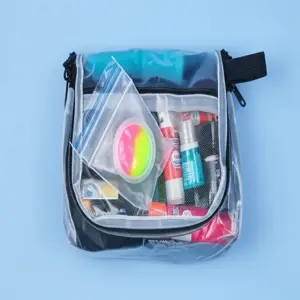
traveling with slime
Ingredients:
- 1 cup flour
- 1/2 cup salt
- 2 teaspoons cream of tartar
- 1 cup water
- 1 tablespoon vegetable oil
- Food coloring (optional)
Instructions:
- Combine the flour, salt, and cream of tartar in a saucepan.
- Add the water and vegetable oil and stir well.
- Cook over medium heat, stirring constantly, until the mixture forms a ball.
- Remove from heat and let cool slightly.
- Knead the dough until it is smooth and pliable.
- Add food coloring (if desired) and knead until the color is evenly distributed.
Store the play dough in an airtight container to prevent it from drying out.
Case Studies: Airlines and Their Slime Policies
While the TSA sets the general guidelines, individual airlines can have their own specific policies regarding what is allowed on board. Here are some examples of how different airlines might handle slime:
- Airline A: Follows the TSA’s 3-1-1 rule strictly. Passengers are required to pack slime in containers of 3.4 ounces or less and place them in a quart-sized bag.
- Airline B: Has a more lenient policy and may allow larger quantities of slime in carry-on luggage, as long as it is not deemed to be a security risk. However, passengers are still advised to pack slime carefully to prevent leaks.
- Airline C: Prohibits slime altogether in carry-on luggage, citing concerns about potential messes and disruptions. Passengers are required to pack slime in their checked baggage.
It’s important to check with your airline directly to find out their specific policies on slime before you travel.
Slime and Allergies: Ensuring a Safe Flight for Everyone
As mentioned earlier, some people may be allergic to ingredients in slime, such as glue, fragrances, or dyes. If you have any known allergies, it’s important to check the ingredient list carefully before playing with slime. To ensure a safe flight for everyone, consider the following:
- Choose Hypoallergenic Slime: Look for slime that is labeled as hypoallergenic or made with natural ingredients.
- Avoid Scented Slime: Scented slime can trigger allergies or sensitivities in some people. Choose unscented slime instead.
- Be Mindful of Others: If you’re playing with slime on a plane, be mindful of other passengers and avoid making excessive noise or mess.
- Inform Flight Attendants: If you or someone you’re traveling with has a severe allergy, inform the flight attendants so they can take appropriate precautions.
Slime Kit Checklist: What to Pack for a Slime-Filled Trip
If you’re planning a slime-filled trip, here’s a checklist of what to pack:
- Small, leak-proof containers (3.4 ounces or less)
- Clear, quart-sized zip-top bag
- Extra zip-top bags (for leaks)
- Slime (pre-made or ingredients for DIY slime)
- Food coloring (optional)
- Glitter (optional)
- Slime charms and add-ins (optional)
- Hand sanitizer
- Cleaning wipes
- Airtight storage container
The Future of Slime Travel: Innovations and Potential Changes
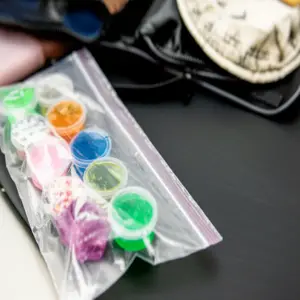
As slime continues to evolve in popularity and innovation, we may see changes in how it’s handled by airlines and security agencies. Perhaps we’ll see the development of TSA-approved, travel-friendly slime formulations that are specifically designed to meet security requirements. Or maybe airlines will create designated slime play areas on board to accommodate passengers who want to enjoy this activity during their flights.
In the meantime, it’s important to stay informed about the latest regulations and pack your slime accordingly.
FAQ: Your Burning Slime Travel Questions Answered
Can I bring slime in my carry-on luggage?
Yes, generally, you can bring slime in your carry-on luggage, but it must comply with the TSA’s 3-1-1 rule for liquids and gels. This means that each container of slime must be 3.4 ounces (100 milliliters) or smaller, and all containers must fit into a single, quart-sized, clear, plastic, zip-top bag.
Can I bring slime in my checked baggage?
Yes, you can bring slime in your checked baggage. There are no specific size restrictions for liquids and gels in checked baggage, but it’s a good idea to package your slime carefully to prevent leaks and spills.
What types of slime are best for travel?
Smaller quantities of classic slime, butter slime, and cloud slime are generally suitable for travel, as long as they meet the 3-1-1 rule for carry-on luggage. Magnetic slime may be problematic due to the metal content and is best packed in checked baggage after contacting your airline. Edible slime is also subject to the 3-1-1 rule.
Does TSA PreCheck or Global Entry affect the rules for bringing slime on a plane?
No, TSA PreCheck and Global Entry do not exempt you from the 3-1-1 rule for liquids and gels. You’ll still need to follow the same guidelines for packing your slime if you’re bringing it in your carry-on.
Can I make slime on the plane?
While you could make slime on a plane if you bring the individual components, be aware that glue and other liquid ingredients will be subject to the 3-1-1 rule if they are in your carry-on. It might be easier to purchase the ingredients at your destination. If you do decide to make slime on the plane, be mindful of other passengers and avoid making a mess.
What happens if TSA confiscates my slime?
If TSA confiscates your slime, it means that it did not meet the security requirements. You may be given the option to dispose of the slime or place it in your checked baggage (if you haven’t already checked it). Unfortunately, you will not be able to get the slime back.
Are there any airlines that prohibit slime altogether?
While most airlines follow the TSA’s guidelines, some may have stricter policies. It’s best to check with your airline directly to find out their specific policies on slime before you travel.
Is slime considered a hazardous material?
No, slime is generally not considered a hazardous material, as long as it is made with non-toxic ingredients. However, the TSA may still scrutinize slime due to its gel-like consistency and potential for disruption.
What if my child has sensory processing issues and needs slime for calming?
If your child has sensory processing issues and needs slime for calming, you can bring a small container of slime with you on the plane, as long as it meets the 3-1-1 rule. You may also want to consider bringing a doctor’s note explaining your child’s need for the slime.
What are some alternative activities to keep my kids entertained if I can’t bring slime?
There are many alternative activities to keep your kids entertained if you can’t bring slime, such as coloring books, activity books, travel games, books, electronic devices, sticker books, pipe cleaners and beads, and audiobooks.
Conclusion: Final Thoughts on Traveling with Slime in 2025
Traveling with slime is absolutely possible, but like any gel-like substance, it requires some preparation to breeze through airport security. The most important rule to remember is the TSA’s 3-1-1 liquids policy—if you’re carrying slime in your hand luggage, it must be in containers no larger than 3.4 ounces (100ml), all stored in a single quart-sized, clear, resealable bag. Larger quantities should go in checked baggage to avoid any last-minute surprises at security.
While most standard slimes (like classic glue-based or fluffy cloud slime) are generally permitted, some varieties—such as magnetic slime (due to metal content) or slime with unusual textures—might get extra scrutiny. To minimize hassle, pack slime in secure, leak-proof containers and consider labeling them to help TSA agents quickly identify what they are. If you’re traveling with kids who rely on slime for sensory comfort, bringing a small, compliant amount in your carry-on can be a great way to keep them entertained mid-flight.
That said, TSA officers have the final say, and experiences can vary depending on the airport and individual screening agent. If you’re ever unsure, checking the official TSA website or contacting your airline ahead of time can save you stress. And if slime isn’t an option, travel-friendly alternatives like playdough, putty, or small craft kits can be just as fun without the liquid restrictions.
Ultimately, with a little planning, you can enjoy your slime on the go—whether it’s for play, stress relief, or just the joy of that satisfying stretch. Safe travels, and may your slime stay fresh and gooey for the whole trip! ✈️💚

